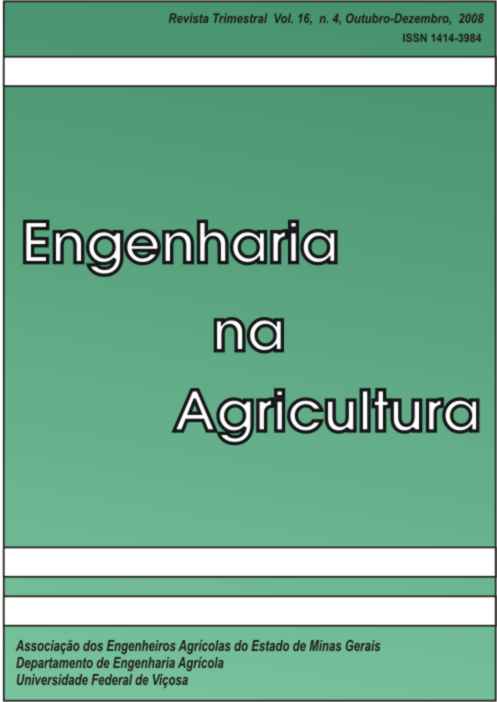INVESTIGAÇÃO DO NDVI E REFLECTÂNCIA DAS BANDAS DO VERMELHO E INFRAVERMELHO-PRÓXIMO DE SENSORES DISTINTOS SIMULADOS POR MEIO DE DADOS DO HYPERION PARA CANA-DE-AÇÚCAR E FLORESTA NATURAL
DOI:
https://doi.org/10.13083/reveng.v16i4.57Keywords:
sensoriamento remoto, índice de vegetação, MODIS, ETM , HRVAbstract
Este trabalho teve como objetivo analisar a inter-relação da reflectância das bandas do vermelho (?Ver) e do infravermelho-próximo (?IVP) e do Índice de Vegetação da Diferença Normalizada (NDVI) dos sensores multiespectrais MODIS (Moderate Resolution Imaging Spectroradiometer), ETM+ (Thematic Mapper Plus) e HRV (High Resolution Visible). Uma imagem hiperespectral do Hyperion foi adquirida sobre a região de Campos dos Goytacazes, Estado do Rio de Janeiro, tendo os efeitos atmosféricos corrigidos. A simulação das bandas foi realizada a partir de 210 e 50 amostras de dados de reflectância hiperespectral, coletadas da imagem Hyperion, em áreas de cana-de-açúcar e de floresta natural, respectivamente. De acordo com os resultados conclui-se: a) as relações entre as bandas individuais e o NDVI dos diferentes sensores tiveram comportamento variado, por exemplo, foram observadas que as diferenças de ?Ver entre os diferentes sensores foram significativas, o mesmo não ocorrendo para ?IVP; b) as translações do NDVIETM+ para NDVIMODIS e do NDVIETM+ para NDVIHRV, tiveram boa relação, ambas com R2=0,71, enquanto a translação do NDVIHRV para NDVIMODIS apresentou uma relação inferior (R2=0,31).Downloads
Downloads
How to Cite
Issue
Section
License
Authors who publish with this journal agree to the following terms:
The author(s) authorize(s) the publication of the text in the journal;
The author(s) ensure(s) that the contribution is original and unpublished and that it is not in the process of evaluation by another journal;
The journal is not responsible for the views, ideas and concepts presented in articles, and these are the sole responsibility of the author(s);
The publishers reserve the right to make textual adjustments and adapt texts to meet with publication standards.
From submission, the author is fully conceding the paper's patrimonial rights to the publication, but retaining the owner of its moral rights (authorship and paper's identification) according to Creative Commons Attribution-Noncommercial.








 Licensed by
Licensed by 